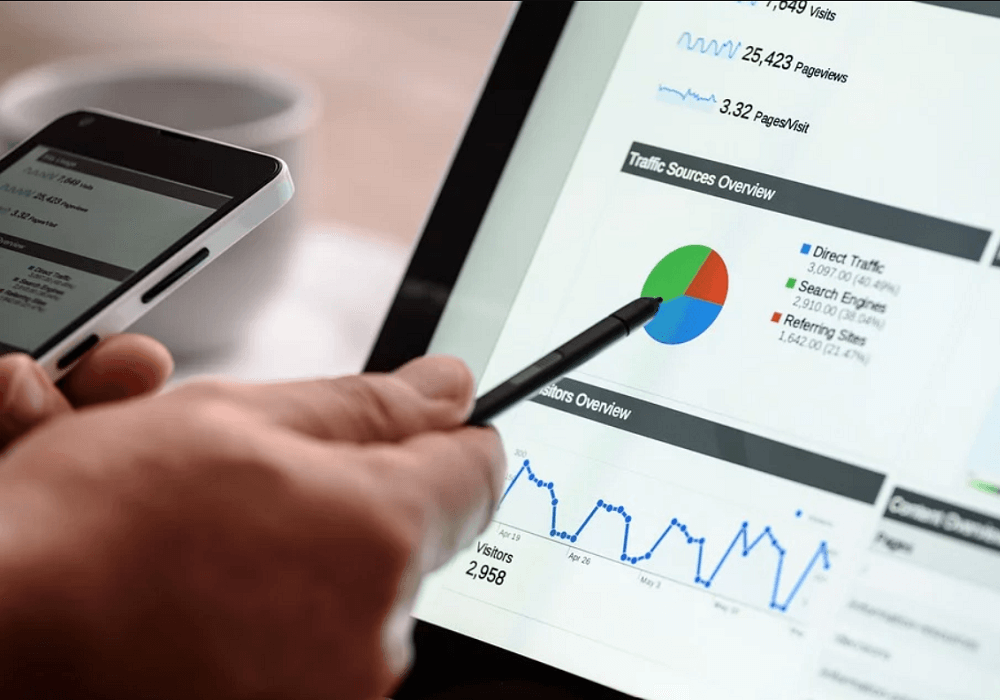PC tracking is one of the most important aspects of any web marketing campaign. Without knowing exactly what is going on with your ads, you won’t be able to make the necessary adjustments to increase their overall ROI.
Tracking your campaigns is an absolute must if you want to maximize your PPC strategy and have an increased ROI. The top seven KPIs that you need to be tracking are as follows:
- CTR (click-through-rate)
- Quality Score
- Impression Share
- Cost-Per-Click
- Conversion Rate
- Average Position
- Cost Per Action
Before we get into these essential KPIs (that you should be tracking and analyzing), it’s important to note that one of the best PPC tracking methods is linking Google Analytics to Google Ads.
Once you’ve linked the two apps, you have access to a higher level of data that can be leveraged to enhance your PPC campaigns.

GCLID For Better PPC Analytics
One of the ways to do this is by making use of GCLID data. What is GCLID and why is it important to you? GCLID(Google Click Identifier) automatically imports all of your ad’s tracking data into Analytics.
This data can then be used to optimize your ad campaigns (in many different ways).
Click Fraud Detection and Prevention
One of the most overlooked optimization techniques is to click fraud detection (and prevention). Click fraud can increase your spending, lower your ROI, and generally wreak havoc on your PPC campaigns.
One of the best ways to combat this is by employing a trusted anti-click fraud application (e.g. Clickcease). Now that we’ve covered some of the more overlooked enhancement methods, let’s move on to KPI tracking.
Average Click-Through Rate
Without a doubt, the average CTR is one of the most important PPC metrics for tracking campaign results. Without knowing what your CTR is, you won’t have any idea how many people are actually clicking your ad after viewing it.
The benchmark CTR across the board hovers around 3% (however this is largely based on your specific industry/niche). CTR is an important KPI to take into consideration when evaluating the effectiveness of a campaign.
Quality Score
The quality score of an ad campaign represents several different KPIs formed into one cohesive scoring system. Created by Google to help advertisers evaluate the overall quality of their ads, this somewhat vague KPI offers an additional level of insight into your PPC campaign that shouldn’t be quickly dismissed.
Quality scores are measured on a 1 to 10 scale system (with 10 being the highest score). Having a higher score will actually translate to lower PPC costs, so remember to focus on improving the relevancy and actual content of your ad.
Impression Share
The impression share of an ad campaign tells you exactly how many people have viewed your ad(s).
It’s important to recognize that knowing how many people have viewed your ad(s) does not directly translate to a better ROI.
What it does do, however, is provide you with a detailed look into what your market share of the PPC landscape is. For example, if your impression share is 60%, that means you essentially own 60% of impressions for your targeted demographic (with your competitors owning 40% of views).
Cost-Per-Click
One of the major KPIs of any PPC campaign is the average cost-per-click (CPC). The CPC and CTR are both linked together, in that just knowing the CTR isn’t very valuable if you don’t know how much it’s actually costing you.
This is where the CPC comes in. The CPC determines how much you’re going to be spending on a click-by-click basis. The CPC of your campaign(s) will depend entirely on your specific niche/industry (as well as whatever keywords you’re targeting).
Conversion Rate
Your PPC campaign’s conversion rate is one of the most vital KPIs that you should be tracking. After all, it doesn’t matter if your CPC is low and your CTR is high if you’re not actually converting that traffic into sales. Conversion rates depend on a multitude of factors, including:
- Your ad’s title/content/copy
- Relevancy to your target audience
- Landing page content and relevance
- Landing page UX
One distinction that must be made is that the term “conversion rate” has different meanings across various industries/niches.
If you’re an online retailer, then conversion obviously translates to sales. However, if you own a law practice then your “conversion” translates to client inquiries/appointment setting/new clients. It’s important to make this distinction if you’re using a PPC firm to handle your ad management.
Make sure they understand your industry/niche, and what conversion really means to your business.
Average Position
The average position of your ad is a relatively new KPI created by Google. What this KPI does is tell you the average location of your ad relative to your competitors (and organic results).
It’s important to understand where your ads are typically falling in the search result pages so that you can properly optimize them. For example, if your average position isn’t close to the top of the SERPs, you might want to increase your bids.
Cost Per Action
The CPA essentially tells you whether or not your PPC campaign has been a success (or not). Without getting too technical, the CPA is, how much it costs for you to acquire a new customer/sale/etc.
If you want to get the most out of CPA tracking, then you need to look into alternative bidding strategies, as well as conversion tracking methods.